10 Top-Rated Tourist Attractions in the Dead Sea Region
It's the sea where you can't sink. The geological wonder of the Dead Sea is one of the must-do activities in the Middle East. At more than 400 meters below sea level this Great Rift Valley inland lake has an incredibly high salt content due to evaporation being the only water outlet. This is what causes the bizarre buoyancy of the water. Taking a float (you can't sink) in the water is the major highlight here, but the surrounding escarpment is also full of excellent hiking opportunities and some really interesting historical remains, including the dramatic Jewish fort ofMasada.
1 Qumran
The caves of Qumran are the location of one of the greatest religious discoveries of modern times. It was here that in 1947 a Bedouin shepherd stumbled upon a cache of parchment and papyrus documents dating from the 1st century BC and the 1st century AD. Known as the Dead Sea Scrolls,they are the oldest surviving manuscripts of the Bible and include all the books of the Old Testament (except Esther), together with apocrypha, and various writings that describe life in the time of Jesus. The manuscripts are all the work of the Essene community: a strictly-observant and puritanical Jewish sect that came into being about 150 BC, after conflicts in Jerusalem over superficial Temple rites and Hellenistic influences. They established their center at Qumran, and although it was destroyed by the Romans during AD 68, the Essenes managed to hide their library and archives in the surrounding caves where they were finally discovered. Altogether, more than 500 Hebrew, Aramaic, and occasionally also Greek manuscripts, ten of them almost completely preserved, have been found in 11 caves at Qumran. Some are on display in Jerusalem's Israel Museum, but due to many of the scrolls disintegrating into fragments across the centuries, the work of scholars attempting to piece together and decipher the texts is ongoing.
The ruins here are not huge, but the kitchen, scriptorium, and refectorycan be seen together with two cisterns, the remains of an aqueduct, which fed the pools for ritual ablutions, and you can also visit a cave where some of the scrolls were found. There's also an excellent audio visual presentation that helps you make sense of the ruins.
2 Mineral Beach
Spa treatments (with the famous Dead Sea mud), sulphur pools, and, of course, the beach fringing that salty Dead Sea water itself are all popular tourist attractions at Mineral Beach. This shoreline resort is a top-pick for your Dead Sea visit. Facilities include a cafe, sun-loungers and sunshades, a swimming pool, and the very necessary fresh-water showers for when you've come out of the sea.
Official site: www.dead-sea.co.il
3 Wadi David
Wadi David is one of the two valleys that incorporate En Gedi Nature Park. This area of lush vegetation - in striking contrast to the surrounding desert hills - is a haven for hikers and wilderness lovers. Trek from the waterfall up to En Gedi Spring where, northwest of this, you'll find the remains of a 4th millennium BC Chalcolithic temple dedicated to the cult of the moon. In the center of the building is the circular 'moon stone', while two gates of the sacred precinct face towards En Gedi Spring on one side and theShulamite Spring on the other. From the Shulamite Spring, a track continues north to the Dodim Cave above the waterfall. From the temple, tracks run northwest to the Dry Canyon and west to a square Roman fortand a circular Israelite stronghold.
4 Wadi Arugot
Wadi Arugot is En Gedi Nature Park's southern valley. Like Wadi David there are a multitude of pools and waterfalls along the trails here, though some of the hiking in this wadi is more difficult than in Wadi David so it tends to get less visitors. If you don't fancy sweating it out on a hike, make sure you at least stop at the 5th century synagogue (just northeast of the wadi entrance) to see the wonderful mosaic pavement here with a riot of fauna motifs and surviving inscriptions.
5 En Gedi Beach
This public beach is an option if you're on a budget and don't want to pay entry to take a dip in the Dead Sea (and don't want to drive on to Ein Boqeq). It's a no-frills experience, and be aware that the beach is stones rather than sand. Just to the south En Gedi Spa offers a more comfortable beach visit with spa treatments available for visitors as well sulphur pools and a swimming pool.
6 Ein Boqeq Beach
This resort, on the south western shore of the Dead Sea, has a mineral spring, which has been used for therapeutic purposes since ancient times. The resort itself has a bundle of hotels and spa establishments for both those who are visiting to seek treatment for skin ailments in the Dead Sea, and travelers who just want a Dead Sea experience. The free public beachhere is excellent. To the north of town are the remains of the Mezad Boqeq fortress, built by the kings of Judah to provide protection against Moabite attacks.
7 Wadi Boqeq
Wadi Boqeq is another great Dead Sea hiking experience full of gorgeous greenery and gushing springs. The hiking here is relatively easy, and it makes a good stop to stretch out your legs if you've spent most of the day lazing on the beach.
8 Neve Zohar
Neve Zohar has a spa, restaurant, and several hot mineral springs. It's worth a stop for the three-kilometer walk here up to Mezad Zohar, a stronghold situated on a conical crag amid magnificent mountain scenery. This is an old Nabataean fort that was later held by the Byzantines. On the road between Neve Zohar and Arad there are two excellent lookout points where you can enjoy excellent views across the Dead Sea.
9 Mount Sodom
This rock-salt mountain is a must for those who want to add a bit of adventure into their Dead Sea experience. As you may have guessed from the name, this is one of the sites traditionally thought to be the Old Testament's Sodom. There's plenty of hiking and mountain biking trails here for the active, and since the top of the mountain is still 176 meters below sea level, it may be the lowest mountain you ever get to climb.
10 Arad
This modern town, founded in 1961, is best known for the important Tel Arad archaeological site just on its doorstep. The Canaanite town excavated here dates back to the 2nd millennium BC, with a palace and temple precinct to the northwest of the site and to the south-west, residential quarters. A line of walls, which would have been reinforced by round towers and extended up to the citadel on the acropolis - can still be traced for considerable stretches. The structures on the acropolis that can be seen today date from the post-Canaanite period. They were built over a period of more than a thousand years, extending from early Israelite to Roman times. The massive walls of the citadel have been rebuilt, using original material, and the complex is entered through the east gate, which is flanked by massive towers. Within the walls lie remains of various store-rooms and a Hellenistic tower. The most important building, however, is the Jewish temple in the northwest of the citadel. The temple is the only Jewish sacred building of its kind so far brought to light by excavation. Since excavation is not permitted on the Temple platform in Jerusalem, the Arad temple, several times destroyed but each time rebuilt, is therefore of great importance to archaeology and the history of religion.
History and Information
The Dead Sea (Hebrew Yam Hamelach, "Salt Sea"; Arabic Bahr Lut, "Sea of Lot") lies between Israel and Jordan, more than 400 meters below sea level, making it the lowest point on the surface of the earth. It is called a "dead" sea because of the high salt content (25-30%, compared with 3.5% in the Mediterranean) of its water, in which neither plants nor animals can live.
With a length of 65 kilometers and a maximum breadth of 16 kilometers, this inland lake is divided by a peninsula projecting from the eastern shore into a smaller southern section with a depth of only four to six meters and a larger northern section up to 433 meters deep. The main inflow of water into the Dead Sea comes from the Jordan River. It has no outlet, but in the hot climate of the area (annual mean temperature of more than 25°C) the rate of evaporation is so high, that hitherto the water level has remained almost constant. In recent years, however, so much water has been diverted from the Sea of Galilee that the inflow of water into the Dead Sea from the Jordan River has been reduced and the water level has fallen. As a result the northern and southern sections are now completely separated by the peninsula. The reduced inflow of fresh water means that the salt content is increasing and there are severe environmental concerns that the Dead Sea may completely disappear in coming years.
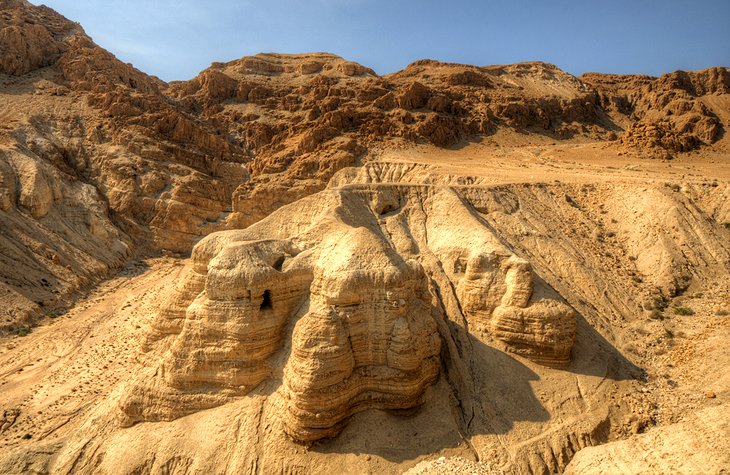
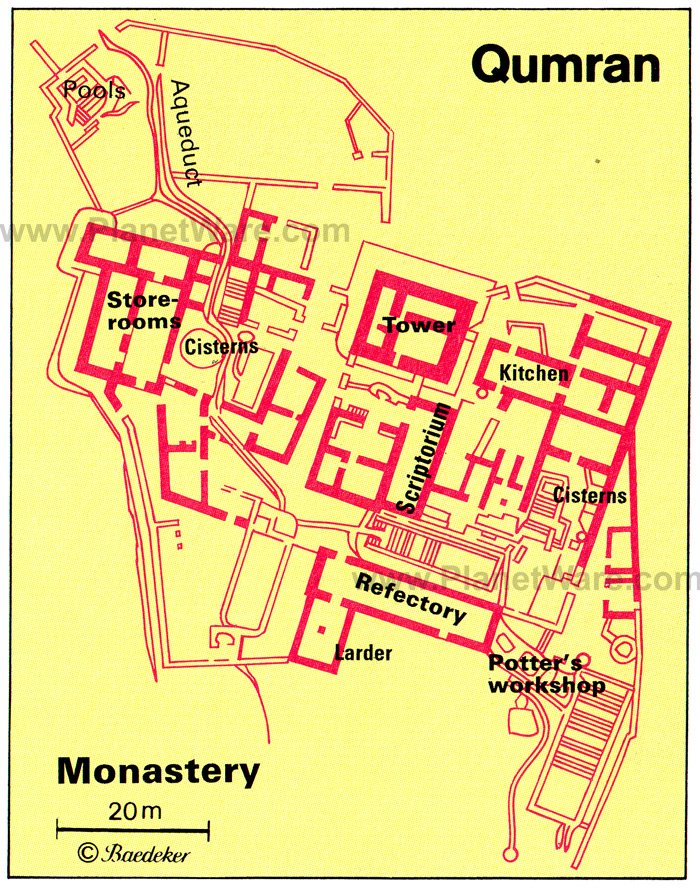
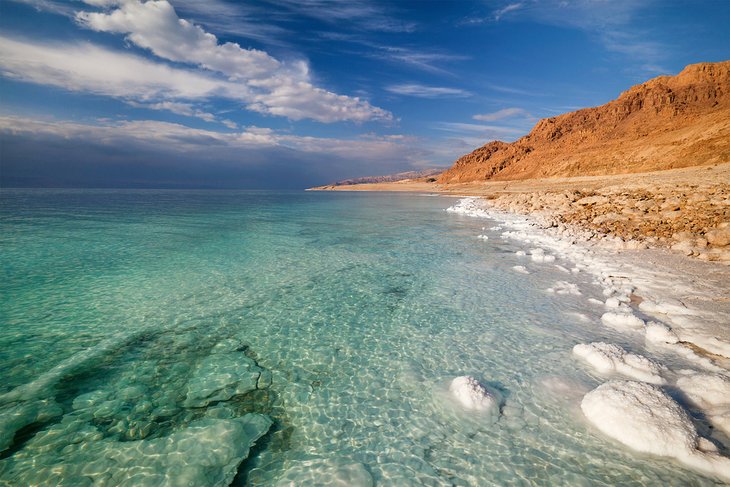
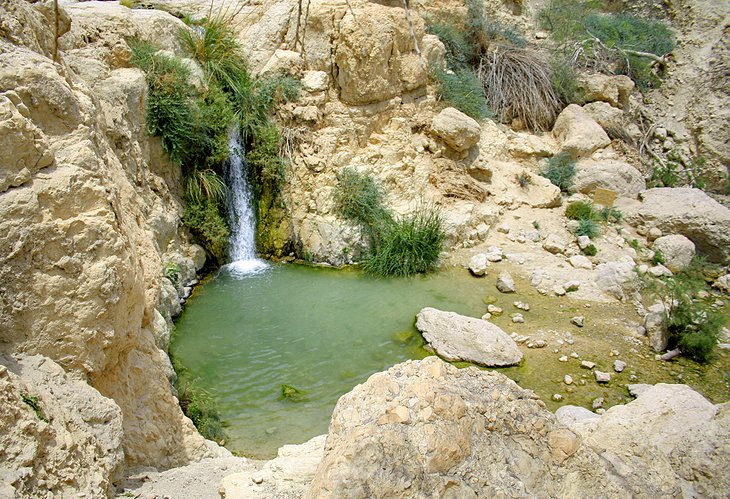
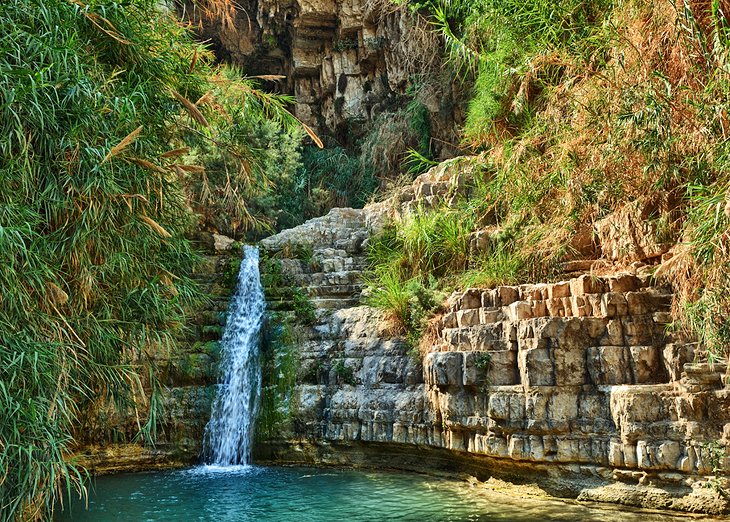
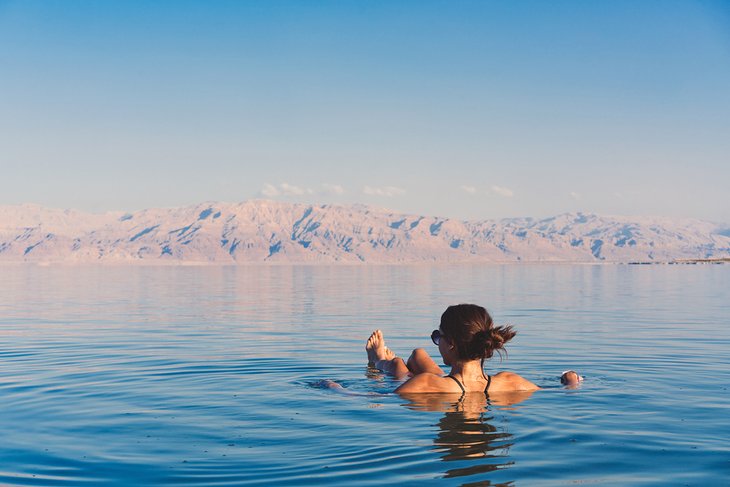
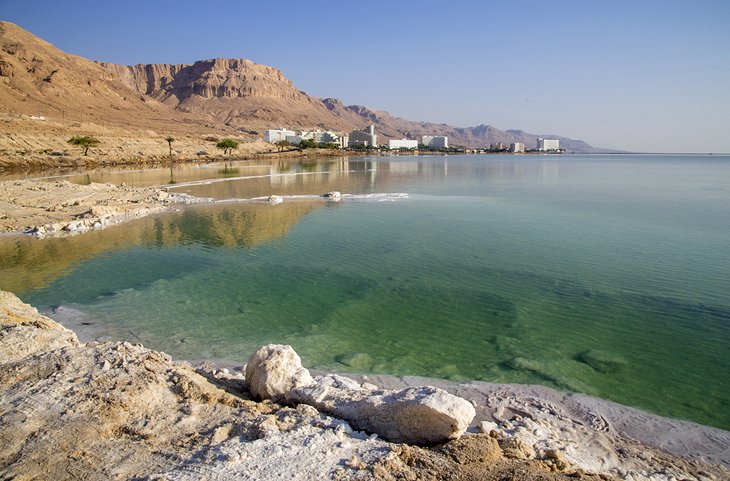
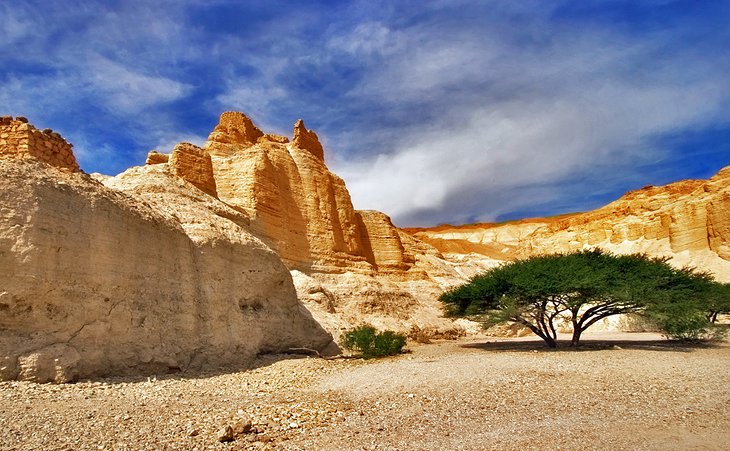
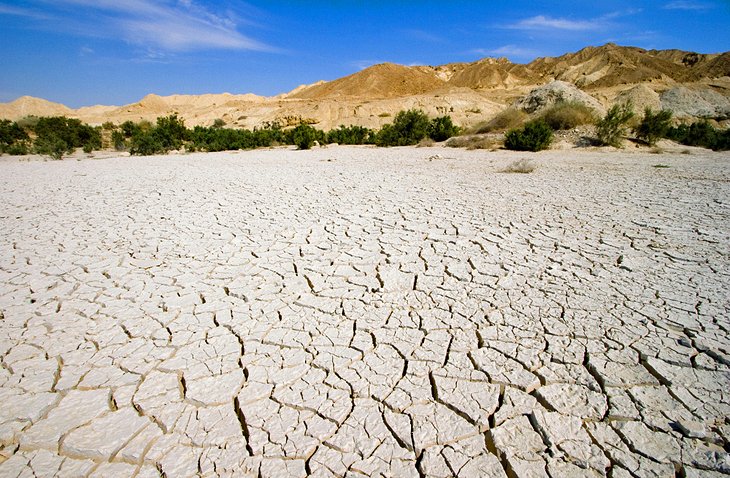
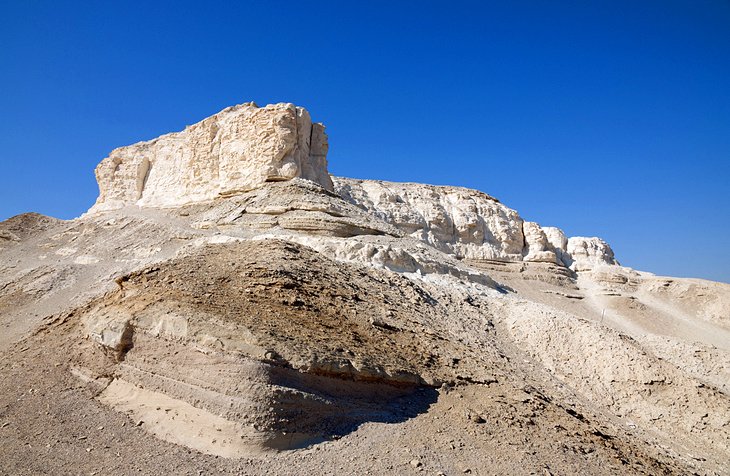
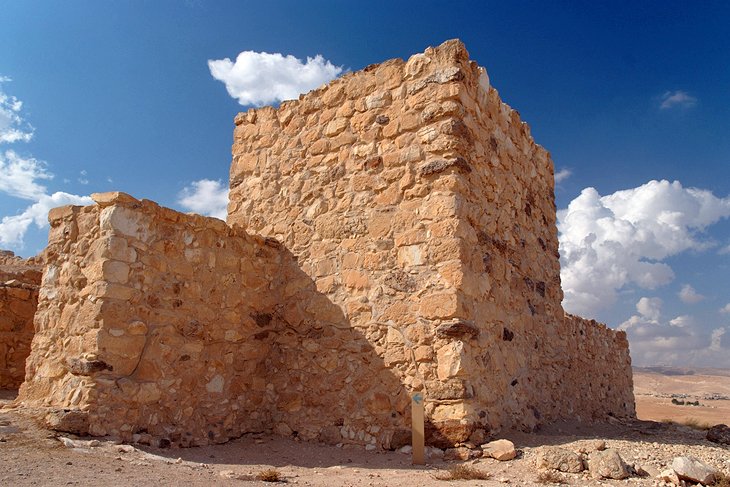
No comments:
Post a Comment